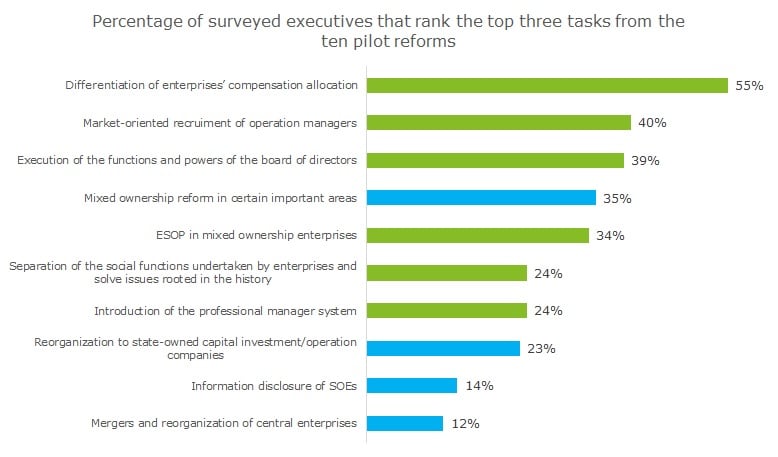Article

Deepening Reform with People as the Foremost
Insights on SOE Talent System Transformation from the Perspective of the New Round of Ten Pilots for SOE Reform
One of the major challenges in deepening SOE reform is to overcome the obstacles related to people and arouse their vitality. The fourth edition of Deloitte SOE Reform Whitepaper aims to address this topic and is titled with “Deepening Reform with People as the foremost-Insights on SOE Talent System Transformation from the Perspective of the New Round of Ten Pilots for SOE Reform”.
In February, 2016, the SOE Reform Leading Group of the State Council decided to launch Ten Reform Pilots for SOEs, among which six pilots are related to the market transformation of talent system, including execution of the functions and powers of the board of directors, selection of executives in a market-oriented way, introduction of the professional manager system, differentiation of enterprises’ compensation allocation, employee stock ownership plan (ESOP) in mixed ownership enterprises, separation of the social functions undertaken by enterprises and resolution of issues rooted in the history, highlighting the importance of talent problem in deepening SOE reforms. SOE talent system transformation is a tough and complicated task. Starting from the status quo of SOE talent system, this paper is to analyse the difficulty and challenges faced by SOE talent system and provide business cases or reference solutions to contribute to the discussion and study of this topic.
By conducting interviews on over 100 executives of SOEs, this paper analyses survey data and comes to 9 key findings including following:
- On the whole, the surveyed executives lack confidence about the ten reform pilots. Only 26.3% of the interviewees are quite or relatively optimistic about the effectiveness of the ten reforms, while over 70% of the executives are not optimistic. We think difficulty in boosting reform comes from the internal and external pressure. The external supporting policies and detailed rules are not complete with few cases for reference, and many enterprises take wait-to-see approach to avoid risks, while the internal pressure is related to sensitive state-owned system and mechanism, the adjustment of deep interest will produce great difficulty.
- Concerning the top three tasks in 2016-2017, most surveyed executives (55%) choose the differentiation of compensation allocation, followed by selection of executives in a market-oriented way and execution of the functions and powers of the board of directors
- As to the operation risk arising from selection of executives in a market-oriented way, 58% of the interviewees top the risk from operation conflict between political hiring and market-oriented selection, in addition, 17% of the survey enterprises are worried this will sacrifice the internal fairness and be harmful to the stability of executive teams.
- As to the execution of the functions and powers of the board of directors (BOD), nearly 60% of the surveyed executives are worried about BOD not being truly authorized with key functions and powers, although those like strategic decision-making, personnel appointment and removal and remuneration development are transferred to the board, SASAC’s complicated regulation and appraisal system will impose too much limits on the BOD.
- Over 70% of the interviewees expressed neutral or unsatisfied with the ESOP being implemented in SOEs and believe that the difficulty is centred on how to design internal equity transfer mechanism, how to define the scope for ESOP and how to design the exit mechanism.
This paper then interprets reasons resulting in the above difficulties and challenges and raises some preliminary recommendations. On top of this, it also provides 3 specific cases based on our previous relevant project experience to show how to develop and implement functions and powers of the BOD, how to design and implement ESOP, how to deal with staff resettlement and relevant expenses during the reform and share corresponding solutions and insights with the view of providing reference for the regulators when developing detailed solution for SOE talent system transformation and for other enterprises when conducting pilot reforms. In the end, this paper puts forward 4 suggestions for actions concerning talent system transformation.
